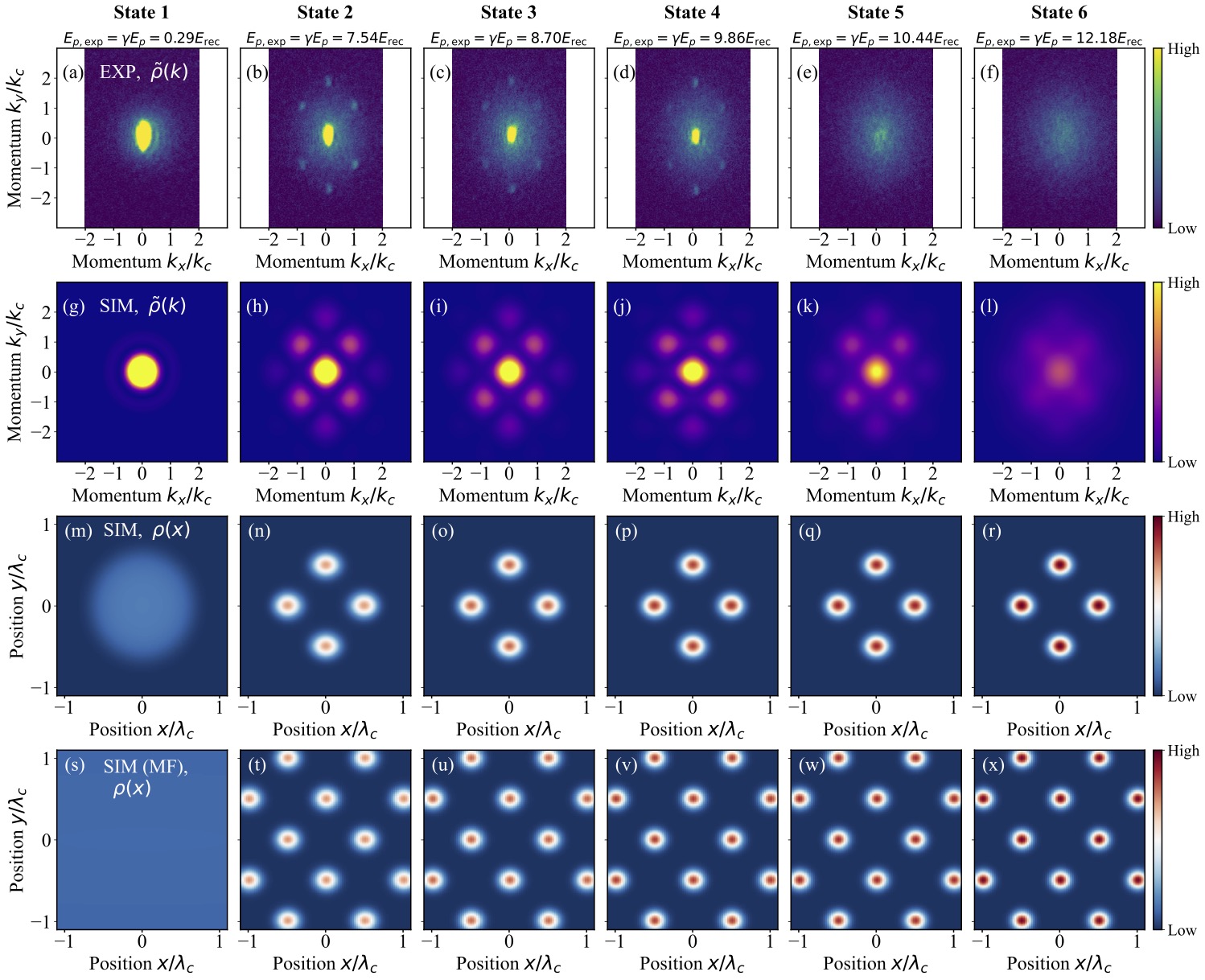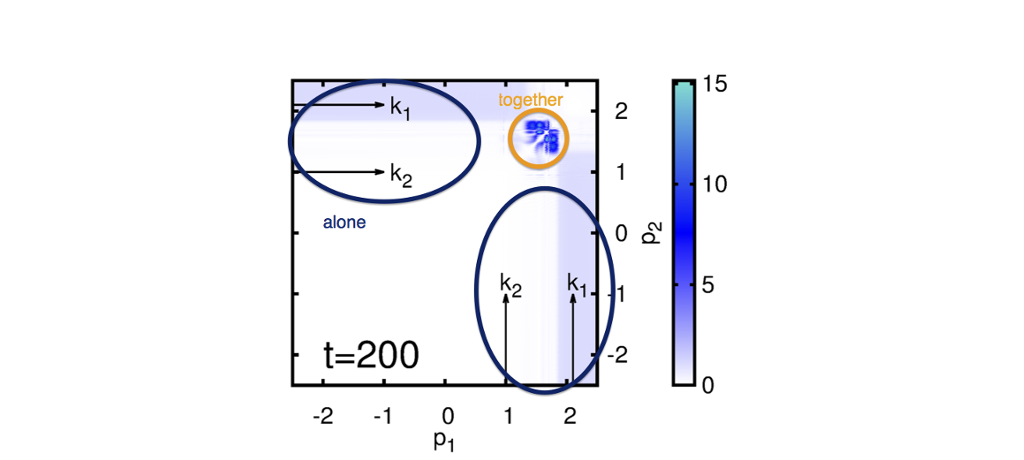SciPost Physics: Mott transition in a cavity-BEC system
In a cavity-BEC system, the light-matter interaction induces an interference field which makes the atoms self-organized into a checkerboard lattice. This phase transition is well-known to be mapped to the superradiant phase transition of a Dicke model. Upon self-organization, the atoms remain coherent and are said to be in a superfluid phase. However, as the self-organization becomes stronger and thus the atoms become more localized in each of the lattice sites, the correlations between atoms vanish, and the system enters a Mott insulator phase. From an effective Bose-Hubbard model point of view, this is because the tightening of the lattice sites not only reduces the tunneling strength, but also increases the on-site interaction.
As a continuation of our work from 2019, we implemented simulations in a two-dimensional system, which is experimentally much more relevant. We utilized a scheme to capture the essential Bose-Hubbard physics and bypass the computational difficulties by confining our atoms in an effective four-site model. This allowed us to correctly extract the momentum space distribution to identify the superfluid-Mott boundary. In collaboration with the experimental group of Hans Keßler and Andreas Hemmerich in Hamburg, we compared our MCTDH-X numerical results with their experimental data, and found quantitative agreement. This comparison is shown in the figure below.
In comparison to the conventional approach of a mapping to the Bose-Hubbard model, MCTDH-X has the advantage of a more adaptive wave function for capturing local densities at each lattice sites. With this work, we have thus demonstrated the capability of MCTDH-X as a reliable numerical tool for investigating Mott transitions.
Read more on SciPost.
Â









